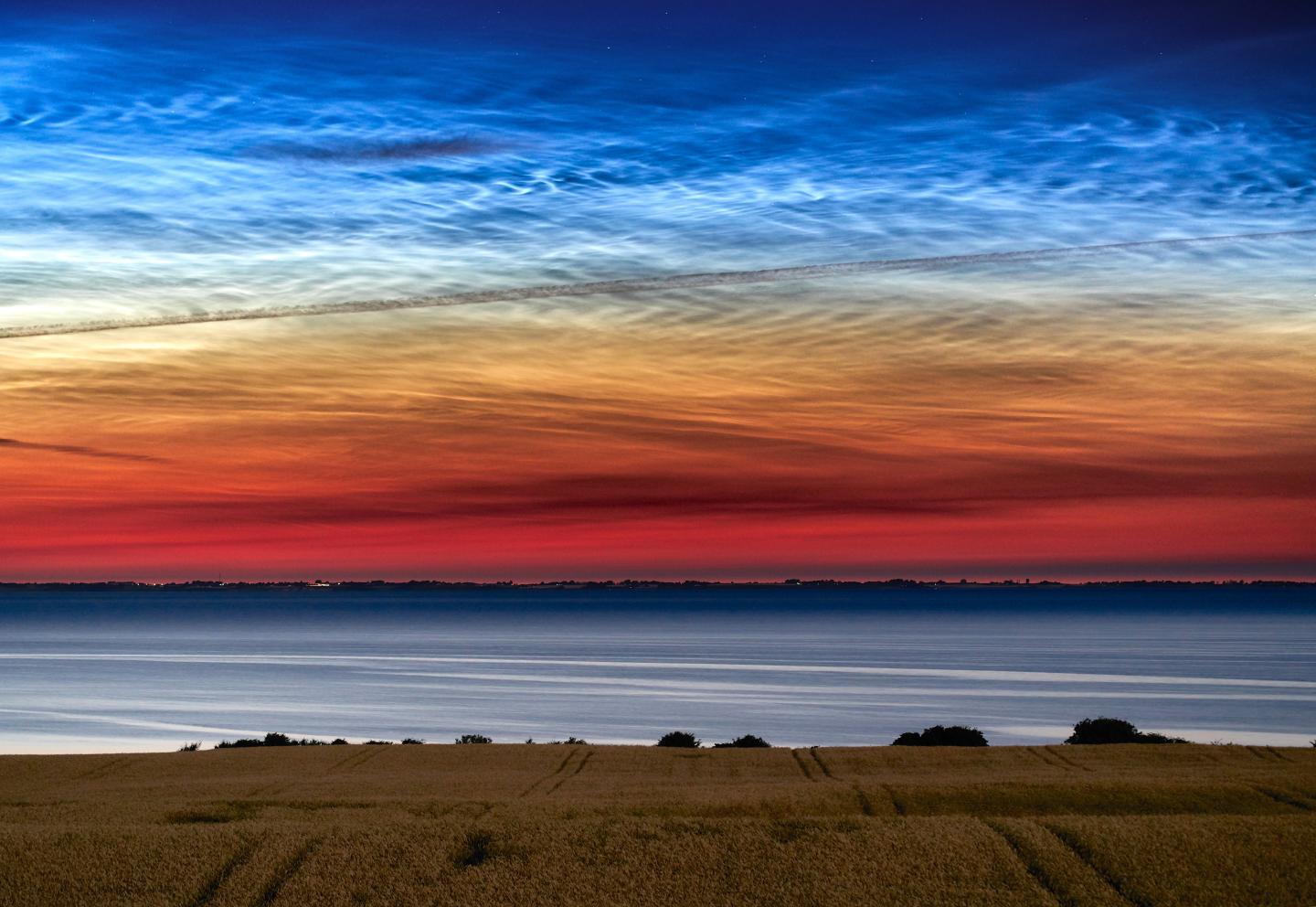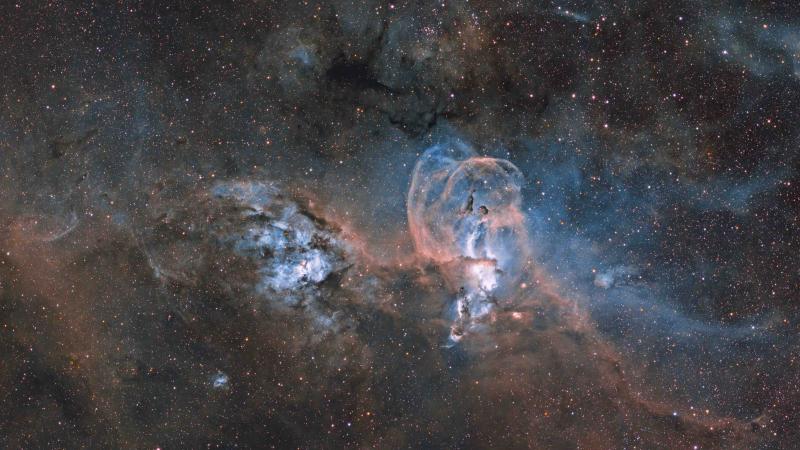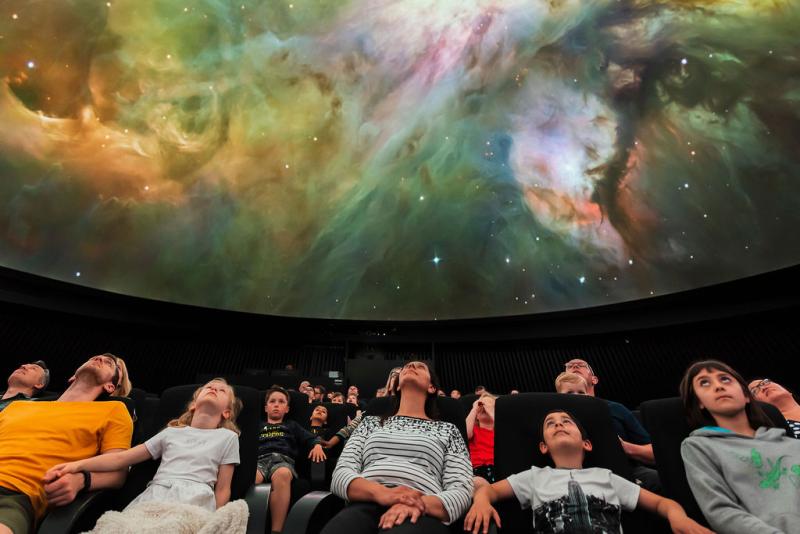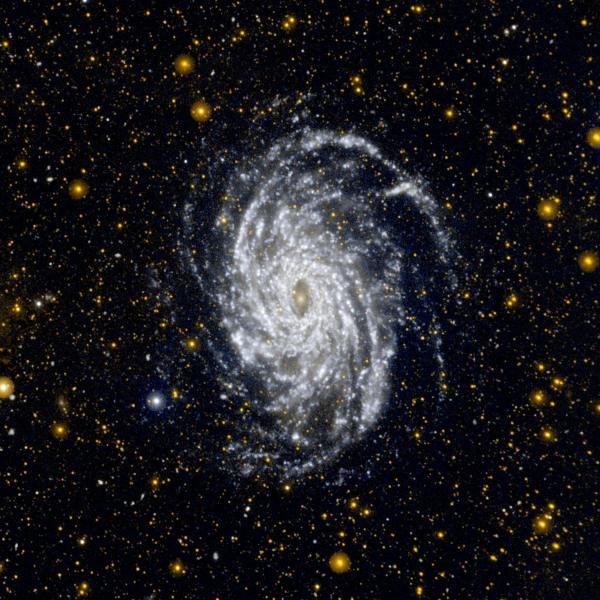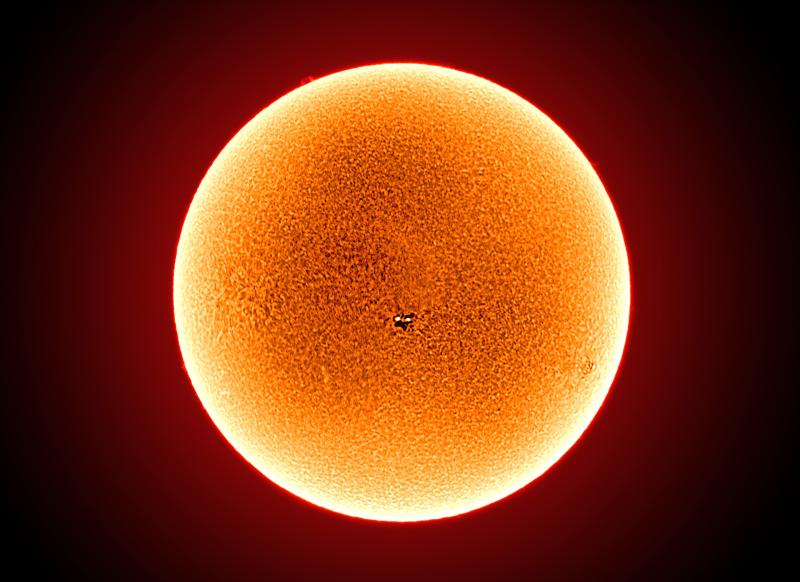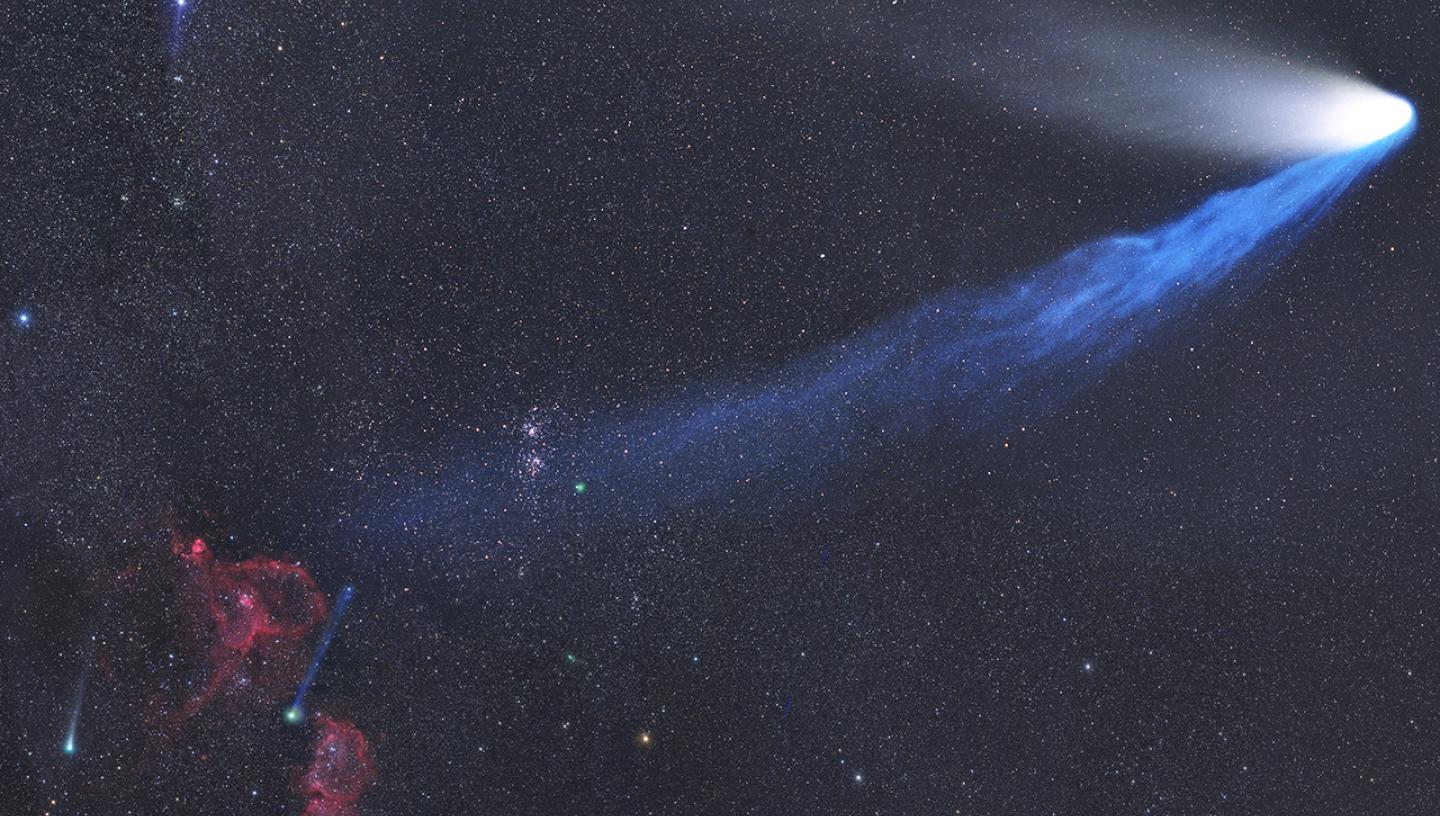
Discover what to see in July's night sky, including some of the brightest summer stars, noctilucent clouds, and a comet in the southern skies.
Top 3 things to see in the night sky in July 2023
- 12 July - The Moon and Jupiter are visible in the early morning
- Throughout the month - Look out for noctilucent clouds
- Throughout the month - Spot the Summer Triangle
(Details given are for London and may vary for other parts of the UK)
See August's night sky highlights
Look Up! Podcast
Subscribe and listen to the Royal Observatory Greenwich's podcast Look Up! As well as taking you through what to see in the night sky each month, Royal Observatory Greenwich astronomers pick two space news stories to talk about.
In July’s episode, available below, we discuss Quaoar's quirky rings that contradict our current theories of how rings form, and the towering plume of water erupting from Enceladus that was observed by the James Webb Space Telescope.
At the start of July, join us on Twitter (@ROGAstronomers) and let us know how many Olympic-sized swimming pools you think this plume can fill in 24 hours!
The Moon meets Jupiter in the morning sky on 12 July
The Moon will meet Jupiter in the sky in the early morning hours of 12 July. Jupiter is one of the planets visible to the unaided eye, and is also bright enough to be seen from light-polluted areas like London and other big cities. Without a telescope, Jupiter can be observed as a bright, steady point of light in the sky.
On 12 July, the Moon will be in its Waning Crescent phase, rising above the horizon around 01:00 in the east. The best time to look for the Moon and Jupiter on this day will be from 03:00 until sunrise towards the east, as both celestial objects will be high enough above the horizon to be seen.
Find the Summer Triangle
While it dominates the summer sky with its size, the Summer Triangle is not a constellation. It consists of three stars, all belonging to different constellations:
-
Vega, the fifth-brightest star visible from Earth, in the small constellation of Lyra. This bright white-bluish star captures the attention of stargazers as it sits on top of the Summer Triangle
-
Deneb, the brightest star in Cygnus, the swan. It marks the tail of the swan as well as the western point of the Summer Triangle.
-
Altair, the twelfth brightest star in our sky, in Aquilla. Altair is yellowish-white in colour and it completes the Triangle’s eastern point. It’s also notable for its rapid rotation making it slightly oblate in shape. Altair takes around 10 hours to rotate on its axis, while our Sun for example takes about 27 days.
To spot this magnificent triangle, look towards the east. The three bright stars stand out prominently against the darkness of the sky, and are easy to spot even in big cities like London despite the light pollution.
Bright stars in the sky, like the one that make up the Summer Triangle, are important orientation checkpoints for stargazers. The Summer Triangle can be used to find north, locate other constellations in the sky, or even locate deep sky objects, invisible to the human eye.
Dim, far-away galaxies, clusters of stars and nebulae can easily be seen through a telescope or a pair of binoculars, but locating these objects in the sky is tricky. As they are too dim for our eyes to spot, stargazers regularly rely on bright stars to guide them.
NGC 7027: A stellar spectacle
NGC 7027 is a boring name for a rather captivating planetary nebula. With its intricate structure and dazzling colours, it's one of the most popular planetary nebulae to observe. NGC 7027 is in the constellation of Cygnus, right by Deneb, the western point of the Summer Triangle.
If you struggle to find it, you can use an app on your phone (remember to turn the night vision mode on!) or a star chart to help you out. To find this nebula, locate the Summer Triangle and the constellation Cygnus. Not all of the stars in Cygnus are particularly bright. The brighter stars form a cross in the sky, and this is often referred to as the Northern Cross asterism. The line from Vega towards the middle star in the Northern Cross leads roughly to NGC 7027.
Noctilucent clouds
Northern Hemisphere readers can look out for noctilucent clouds in July, a space phenomenon that makes clouds appear to glow silver or blue at night. Noctilucent means 'night-shining'. As the name suggests, noctilucent clouds are most commonly observed during the late evening or early morning hours, when the Sun is below the horizon but still illuminating the nighttime clouds from below.
They can appear from the end of May to the beginning of August, however sightings are more likely during June and July. Moreover, they're only visible at latitudes between about 45 and 80 degrees north or south of the equator (which includes the UK).
Noctilucent clouds are formed in the mesosphere when ice crystals form on suspended dust particles. These dust particles may originate from micrometeorites falling to Earth, volcanic eruptions or rocket exhausts. The ice crystals reflect sunlight when the Sun hits them from below, causing the clouds' characteristic shimmer.
Although the occurrence of these clouds is quite unpredictable, there are ways you can give yourself the best chance of seeing them. Look up an hour or two after sunset or before sunrise from somewhere with a flat horizon and a clear view of a wide patch of sky. In the evening, look west around 40 minutes after the Sun has set and in the early morning, look towards the northeast where the Sun will soon be rising.
Comet Lemmon sailing through the southern skies
Comet C/2021 T4, nicknamed Lemmon after the highest point of the Santa Catalina Mountains, was discovered in 2021. Its orbit around the Sun is currently taking it into the inner Solar System, but the comet is usually located in the outer edges of the Solar System some 44,000 AU (6.6 trillion km!) away from us. At this distance, Comet Lemmon takes millions of years to complete one orbit around the Sun. But due to it now interacting gravitationally with various planets in the inner Solar System, its path is changing. Its orbital period will also be reduced, from millions to only a few thousand years.
As a comet comes closer to the Sun, the heat from our star causes ice on the comet's body to vaporise and a magnificent tail of dusty particles can form. These tails can stretch for millions of kilometres, and when observed from Earth, they are truly breathtaking cosmic phenomena.
Comet Lemmon will be closest to us on 18 July, at a distance of 0.54 AU, twice as close to us as the Sun. As it comes closer, it will also get brighter, and astronomers estimate it will reach magnitude 7, making it visible to mid-sized and bigger telescopes, but still invisible to the unaided eye. It is important to point out that the brightness of a comet and the size of its tail are very unpredictable. These depend on the chemical composition of the comet's body, which is often impossible to predict.
If you are in the Southern Hemisphere and want to look for Comet Lemmon, it'll be in the constellation of Sculptor at the start of the month and will move into Grus, Indus, Telescopium and then Ara by the end of July.
Moon phases for London, July 2023:
Full Moon - 3 July (12:38)
Third Quarter - 10 July (02:47)
New Moon - 17 July (19:31)
First Quarter - 25 July (23:06)
Buck Moon of 2023
A Full Moon greets us as July rolls around. In London, the Moon will rise at 22:14 in the southeast, and set at 03:55 in the southwest (although these times might vary slightly for different cities around the UK).
July's Full Moon is also sometimes referred to as the Buck Moon. This name was coined by Native American Algonquin people, and it coincides with the time of the year when male deer (bucks) begin to grow their antlers. The Algonquin people lived near the Mississippi river where deer were prevalent. Every year they would observe the deer lose their antlers and grow them again in mid summer. This was a very important part of their annual cycle, and the name stuck to this day.
Never miss a shooting star
Sign up to our space newsletter for exclusive astronomy highlights, night sky guides and out-of-this-world events.
You may also be interested in
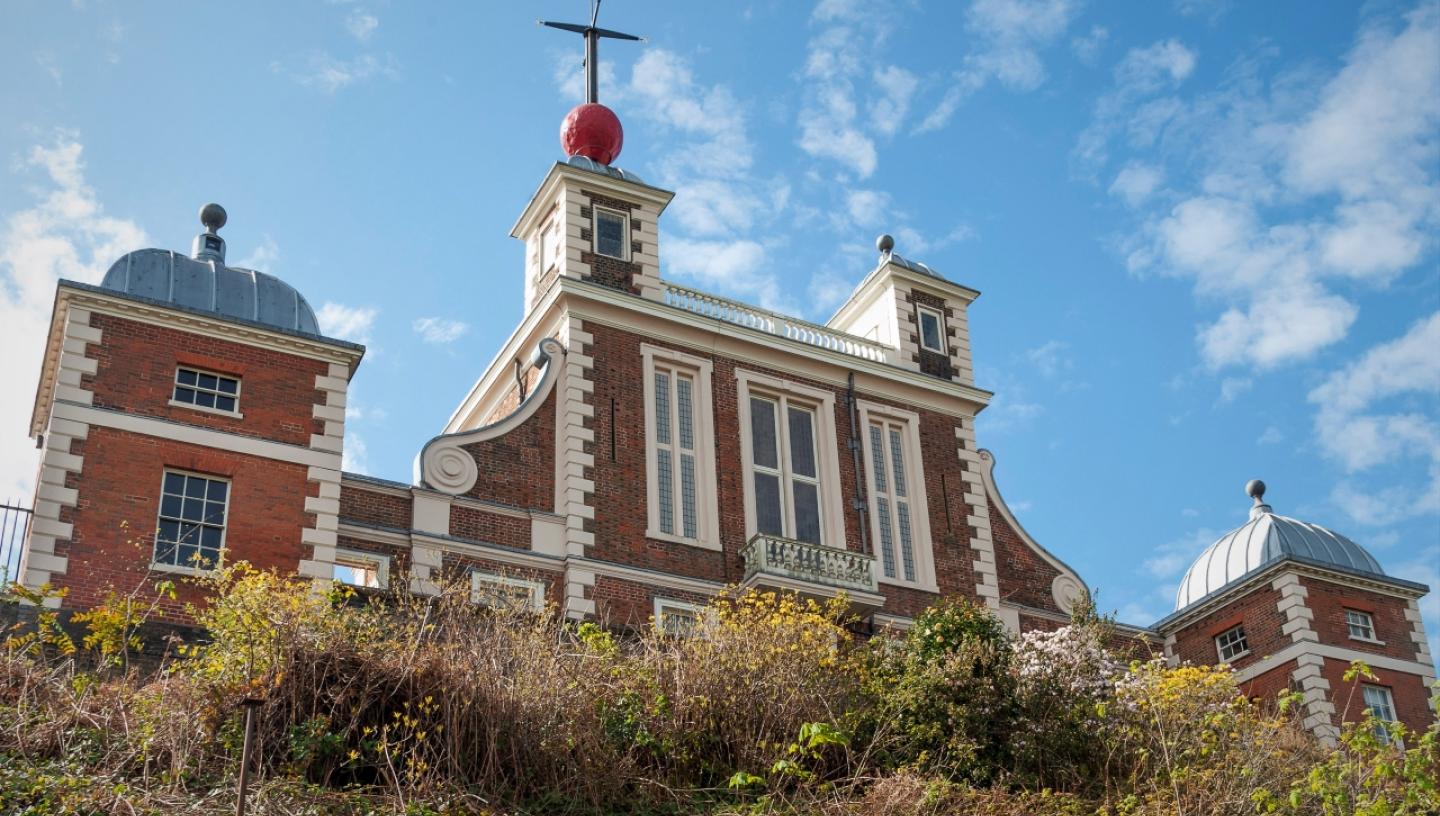
Visit the Royal Observatory
Header image: Comets Traffic in Constellations Perseus and Cassiopeia 1 © Gerald Rhemann




